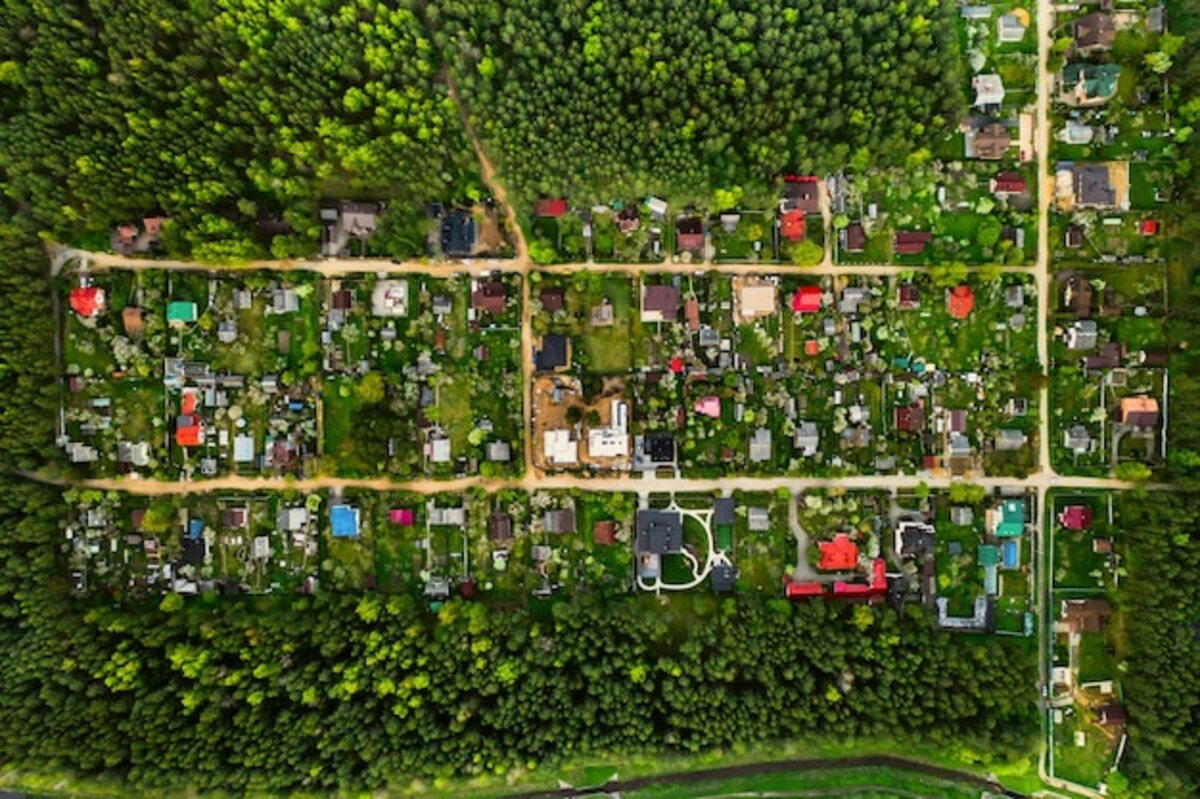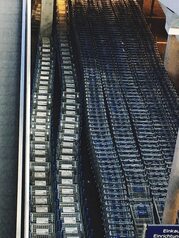The influence of sustainability on the value of your neighborhood

Sustainability has become a key factor that can elevate the value of your neighborhood, impacting not only the natural environment but also the quality of life of its residents. Nowadays, buyers are looking for more than just a house; they want to belong to communities that prioritize eco-friendly practices and nearby services that promote a healthy lifestyle. In this article, we will explore how sustainability influences the appreciation of your location and what aspects to consider to maximize the value of your property.
The connection between sustainability and added value: a deep analysis
The connection between sustainability and added value is based on the growing consumer demand for environments that are not only aesthetically pleasing but also promote a healthy and environmentally friendly lifestyle. Sustainable features, such as energy efficiency, the use of eco-friendly materials, and urban planning focused on green spaces, not only enhance the quality of life for residents but also attract a greater number of buyers interested in investing in properties with these advantages. This trend translates into increased added value for homes located in neighborhoods that prioritize sustainability. Moreover, communities that encourage sustainable practices often have solid infrastructure, accessibility to public transport, and nearby services such as local shops and recreational spaces. These features not only facilitate the daily lives of residents but also create a sense of community that is highly valued by buyers. As more people seek to live in places where they can enjoy a clean and healthy environment, the value of properties within these neighborhoods tends to increase significantly. In this context, understanding how to implement sustainable practices can be key to maximizing both the personal and financial value of your home.
2. Nearby services: how do they affect the neighborhood's appeal?
Nearby services, such as supermarkets, schools, parks, and health centers, are fundamental elements that can enhance the appeal of a neighborhood. When these services are easily accessible, it not only improves the quality of life for residents but also fosters a more united and active community. Proximity to facilities that promote a healthy lifestyle, such as gyms or green spaces, can be especially valuable for those looking to adopt more sustainable habits. Consequently, buyers tend to place a higher value on properties located in areas with direct access to these essential resources.
Furthermore, the environmental impact of nearby services cannot be underestimated. Communities that offer sustainable alternatives, such as local markets and efficient public transportation, help reduce the collective carbon footprint and promote eco-friendly practices among their residents. This not only attracts environmentally conscious consumers but can also increase demand in the local real estate market. As more people seek residences that allow them to live sustainably and conveniently, those neighborhoods that integrate accessible and environmentally friendly services will be well-positioned to see a significant increase in their long-term value.
3. Green investments: community projects that increase local value
Green investments in community projects not only enrich the environment but also generate a sense of belonging and social cohesion among residents. Initiatives like the creation of urban gardens, community parks, and sustainable recreational spaces encourage interaction among neighbors and promote an active lifestyle. These types of projects not only beautify the neighborhood but also provide educational opportunities about ecological practices and sustainability, which can attract potential buyers who value these features in a community.
Additionally, these projects can be catalysts for the local economy. By investing in green infrastructure, jobs are created and local trade is encouraged through farmers' markets or sustainable fairs. The ability to access fresh and healthy products improves the quality of life, which translates into increased interest in living in areas where these initiatives are present. Thus, green investments not only benefit the environment but also significantly elevate neighborhood value by making it a more attractive place to live and invest.
4. The role of sustainable infrastructure in the real estate market
Sustainable infrastructures play a fundamental role in the current real estate market, as they not only improve the quality of life for residents but also significantly increase property values. Elements such as efficient water management systems, bicycle facilities, and well-designed green spaces are increasingly demanded by buyers. These features not only contribute to a healthier and more livable environment but also reflect a commitment to sustainability that can make a difference in a purchasing decision. By fostering communities that prioritize environmental well-being, sustainable infrastructures become a key attraction for those looking to acquire property.
Additionally, the integration of green technologies in urban infrastructures not only promotes a reduction in long-term operating costs but also enhances the neighborhood's image to potential buyers and renters. The implementation of renewable energies, such as solar panels or geothermal heating systems, not only decreases the area's carbon footprint but also provides economic advantages by reducing monthly expenses. This approach to eco-friendliness translates into a growing demand for properties located in areas where these practices are visible and accessible, which positively impacts the overall value of the neighborhood. Ultimately, investing in sustainable infrastructures is a smart strategy for both developers and property owners interested in maximizing their real estate investment.
5. Ecological communities: successful examples in Costa Rica
Costa Rica has stood out as a role model in the creation of ecological communities that not only respect but also celebrate their natural environment. A notable example is the community of Monteverde, where sustainable practices are integrated into the daily lives of its residents. Here, reforestation and water conservation projects are a fundamental part of community life, which not only promotes a deeper connection with nature but also attracts people interested in a responsible lifestyle. These types of initiatives have proven effective in increasing real estate value by creating a unique and differentiating appeal compared to other locations.
Another exemplary case is the development of the eco-sustainable community in Nosara, where the construction with local materials and techniques that minimize environmental impact is prioritized. The integration of green spaces and common areas designed to foster social interaction has created an environment that highlights both the natural beauty of the place and a vibrant community culture. These features are highly valued by potential buyers, who seek not only a property but also to belong to a more conscious and healthy lifestyle. Thus, Nosara becomes a clear reflection of how ecological communities can positively influence the appreciation of the neighborhood.
6. The buyer's perception of sustainable properties
The buyer's perception of sustainable properties has significantly evolved in recent years. Increasingly, potential homeowners are attracted to homes that are not only aesthetically pleasing but also incorporate eco-friendly practices in their design and construction. Elements such as solar panels, rainwater harvesting systems, and recycled materials not only provide environmental benefits but are also seen as a smart investment. This trend reflects a shift in buying priorities: buyers increasingly value energy efficiency and low environmental impact, thus seeking properties that allow them to reduce their long-term expenses and positively contribute to the planet.
Additionally, the buyer's perception of sustainability is strongly influenced by the community environment. A neighborhood that promotes green spaces, facilitates bike use, and offers access to efficient public transportation is highly valued by those seeking a higher quality of life. Current residents tend to want to be surrounded by like-minded individuals who prioritize health and collective well-being. In this way, properties located in areas that encourage sustainability not only provide a comfortable home but also a vibrant community that can significantly enhance their appeal in the real estate market. Thus, when considering how to maximize a property's value, it is essential to take into account both the individual features of the home and the dynamics of the neighborhood as a whole.
7. Practical measures to increase sustainability in your neighborhood
To increase sustainability in your neighborhood, it is essential to foster collaboration among residents. Organizing community gatherings can be an excellent way to exchange ideas and establish a joint action plan. Activities like creating community gardens not only beautify the area but also promote urban agriculture and local food production. Additionally, involving neighbors in recycling and composting projects can help reduce waste and educate about sustainable practices, thereby creating a sense of shared responsibility towards the environment.
Another practical measure is to promote the use of sustainable transportation within the community. This can include everything from creating safe bike lanes to organizing car-free days or events that encourage the use of public transport. Through these initiatives, not only is the neighborhood's carbon footprint reduced, but connections among residents are also improved by fostering an active and healthy lifestyle. Implementing vehicle-sharing or rental systems for electric vehicles can also be an important step in making this eco-friendly option more accessible to all members of the neighborhood.
8. Future of urban development: trends towards sustainability
The future of urban development is shaping up with a clear focus on sustainability, being a necessary response to current environmental and social challenges. Cities are beginning to adopt planning models that integrate green spaces, sustainable transportation systems, and energy-efficient buildings. This transformation not only aims to minimize environmental impact but also to promote more cohesive communities where people can enjoy a higher quality of life. As these practices become the norm, it is likely that properties located in sustainable areas will experience a significant increase in value.
Moreover, trends towards sustainability are influencing the way neighborhoods are designed and developed. The implementation of clean technologies, such as solar panels and efficient water management systems, is gaining traction and becoming additional attractions for potential buyers. Similarly, the creation of infrastructures that promote active lifestyles—such as walking or biking trails—contributes to a healthier and more desirable environment. This combination of elements not only highlights the commitment to the environment but can also translate into tangible added value for homeowners looking to maximize their long-term investment.



